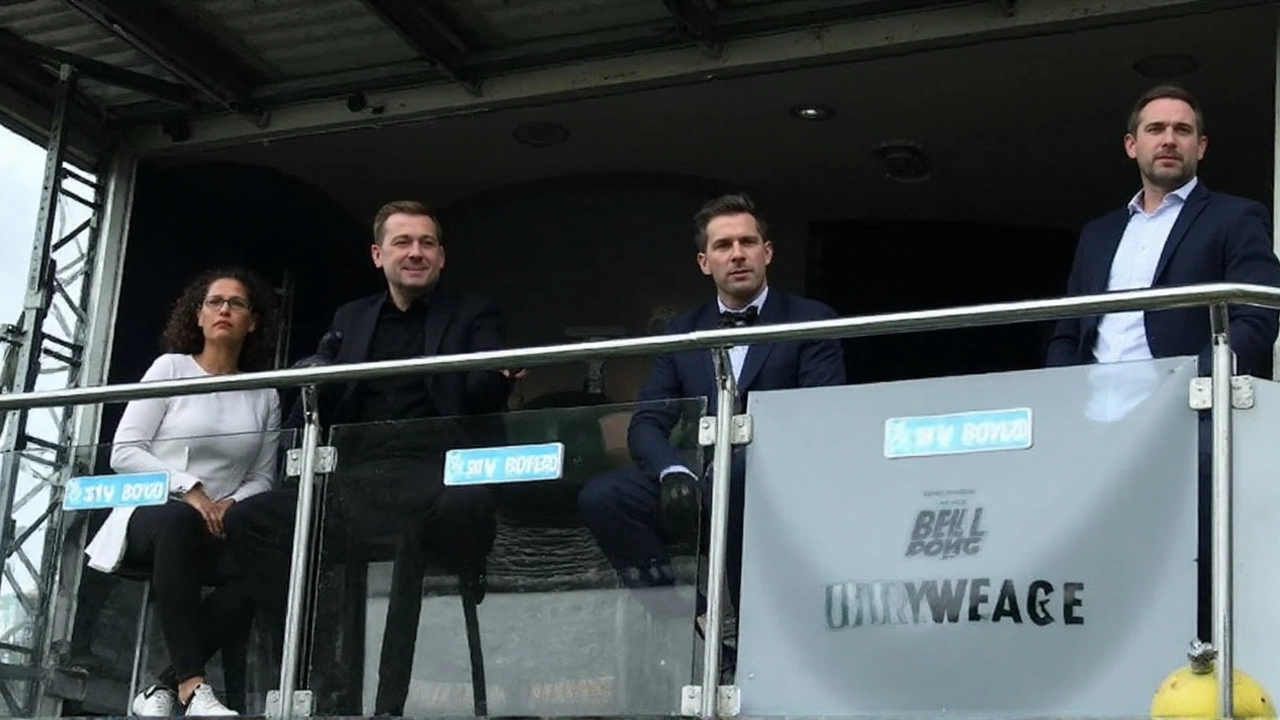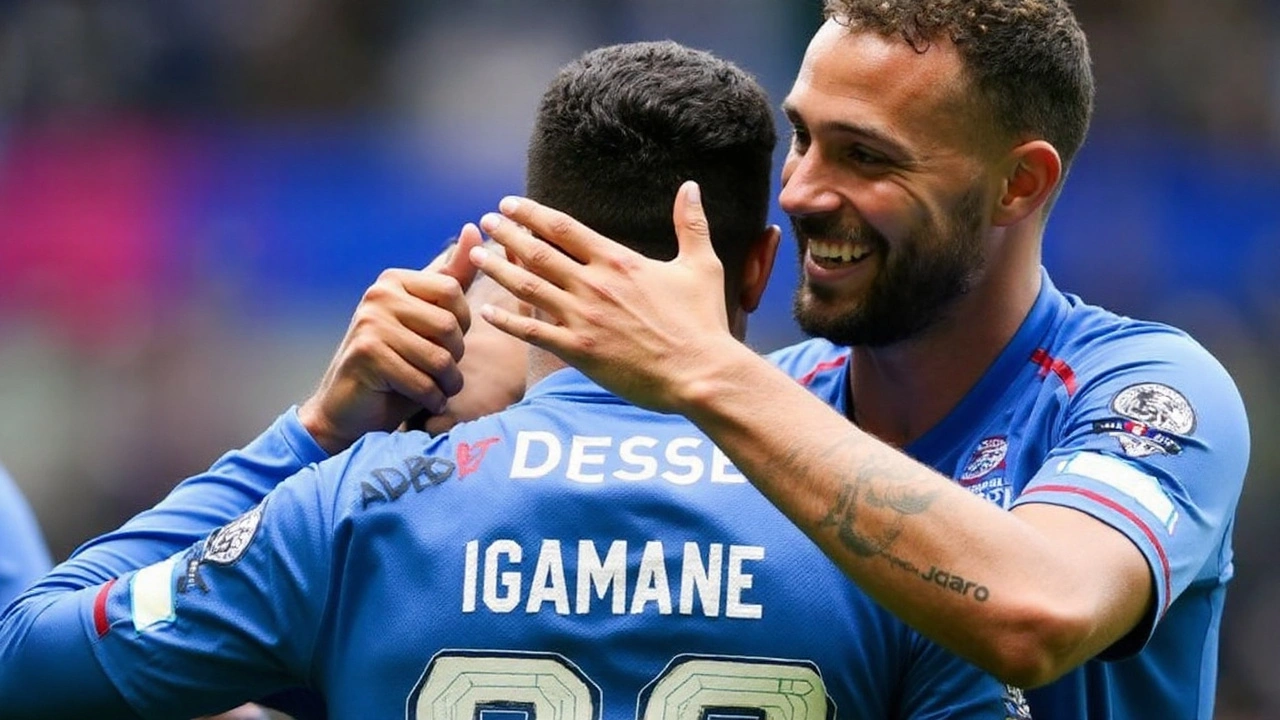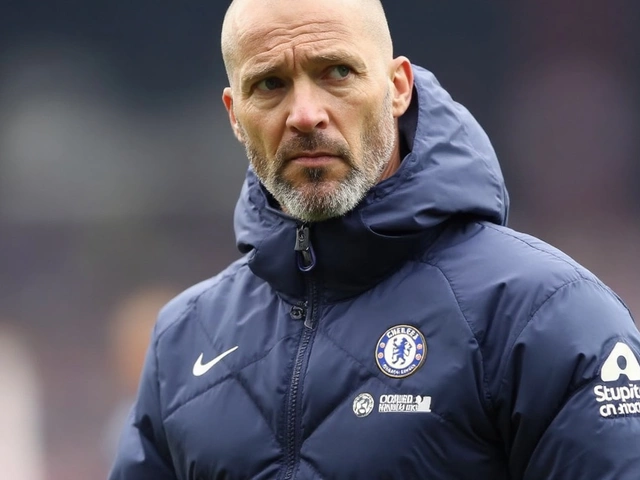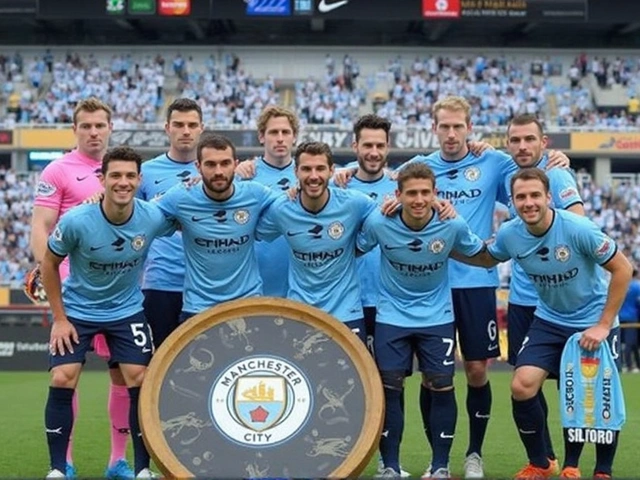Rangers: Can Cyriel Dessers and Hamza Igamane play together?
The transfer noise is drowning out a clear answer
The biggest selection question at Ibrox might never reach the pitch: can Rangers field Cyriel Dessers and Hamza Igamane in the same XI and make it work? On paper, the pairing looks intriguing. In reality, the transfer market, dressing-room dynamics, and a tight European calendar are pulling the idea apart before it’s tried.
Igamane is at the center of firm interest from Europe. Feyenoord have lined up a loan with a permanent option, and Lille have reopened talks, testing Rangers’ resolve and timing. The noise grew louder after reports that the 21-year-old declined to come on as a substitute in a recent match. That sparked criticism from pundits and supporters and left the club with man-management to do at a delicate moment. Rangers have kept things calm in public, but inside any top club, moments like this are handled quickly to protect the group.
Across the dressing room, Dessers remains the reference point up front. He has been linked with AEK Athens, yet he’s still starting and still carrying responsibility for goals. After the flat draw with Dundee at Ibrox, he accepted the team hadn’t created enough, which mirrors what the eye test showed: pressure without enough clean chances. Then came an injury scare, but manager Russell Martin downplayed the severity, and the expectation is that the Nigerian could feature in key fixtures, including Champions League commitments. That matters. Those nights demand stability, and stability usually means sticking with one striker and a compact midfield.
So we have two center-forwards, both good enough to lead the line, both with different selling points—and both on the market. The longer that remains true, the fewer chances the staff will take to experiment.

Could a two-striker plan actually work?
Rangers have been a one-striker team by design. The default has been a central No 9, creative width, and a tight midfield three to control transitions. That shape protects the back line and keeps the ball in the opposition half. Going with two strikers can blow open the game in both directions unless the structure around them is right.
If you strip it back to profiles, the fit is not crazy. Dessers is the stronger back-to-goal option. He occupies center-backs, pins the line, and brings others into play. Igamane is the runner—more direct, livelier between lines, and a threat when the space appears. One can secure the first ball; the other can attack the second. That’s a classic pairing as old as 4-4-2 football.
But the modern game asks for more than labels. Out of possession, two strikers must set the press, protect passing lanes into midfield, and still be ready to run the channels. If either forward switches off, the block opens up and the opponent walks through. That’s the fear that keeps coaches tied to a single No 9.
There are a few realistic routes to try:
- 3-5-2 with wing-backs: Gives width and an extra center-back behind the press. Dessers can play as the target, Igamane can work off flicks and through balls. The midfield three holds the game together. Downsides: it asks a lot of the wing-backs and changes wide roles for existing wingers.
- 4-4-2 diamond: Keeps two up top while retaining central control. A true No 6 screens transitions, two No 8s press the half-spaces, and a No 10 links the strikers. Risks: the sides of the diamond can be exposed, so the full-backs must run all night.
- 4-2-3-1 morphing to 4-2-2-2: Start as a single striker with Igamane wide, then slide him inside without the ball to press as a second forward. This lets Rangers switch gears based on game state. The trick is coaching the rotations so it doesn’t look improvised.
Game state matters. Two up top makes the most sense late in matches when Rangers are chasing a goal or when opponents park deep in a low block and dare you to cross. It’s less appealing away in Europe when control and rest defense are everything. That’s why Champions League qualifiers tend to freeze experiments—coaches pick reliability over curiosity.
The human side is just as important as the chalkboard. If the report about Igamane declining a substitute role is accurate, it forces the club to guard the dressing-room tone. When a player is halfway out the door, minutes often go to those who will still be there in two months’ time. And if Dessers is also the subject of active interest, the staff will be cautious with workloads and roles while talks simmer. None of that helps trial a new partnership.
The market also shapes tactics. A Feyenoord loan with an option suggests suitors see upside but want to de-risk the fee. Lille reopening talks points to a genuine queue. If a deal lands, Rangers free up salary and potentially bank a future fee, then pivot to a forward who fits the coach’s long-term plan—either a pure runner to stretch games behind a single No 9, or a hybrid second striker who drops into pockets. On the other side, interest in Dessers from AEK Athens hints at demand for a more classic No 9 profile. If he were to go, Rangers would need either a dominant penalty-box replacement or a different build-up model that leans on midfield goals.
There’s also the calendar. With European deadlines and a league program that punishes slow starts, the staff have limited training windows to rep a brand-new shape. Building chemistry between two strikers takes more than tossing them on for 20 minutes. You need patterns: near-post/far-post runs, triggers for who drops and who spins, agreed cues for the press. That only sticks with reps.
So, could Dessers and Igamane coexist? Yes—if Rangers commit to a structure that protects the middle of the pitch, coach the press carefully, and pick their moments. Will we see it soon? That depends less on tactics and more on timing. If either move accelerates, the question becomes moot. If both stay past the window, the coaching staff may finally get the runway to test it—first in bursts off the bench, then, if it sticks, from the start against low blocks at Ibrox. The idea isn’t dead; it’s just stuck in traffic.





